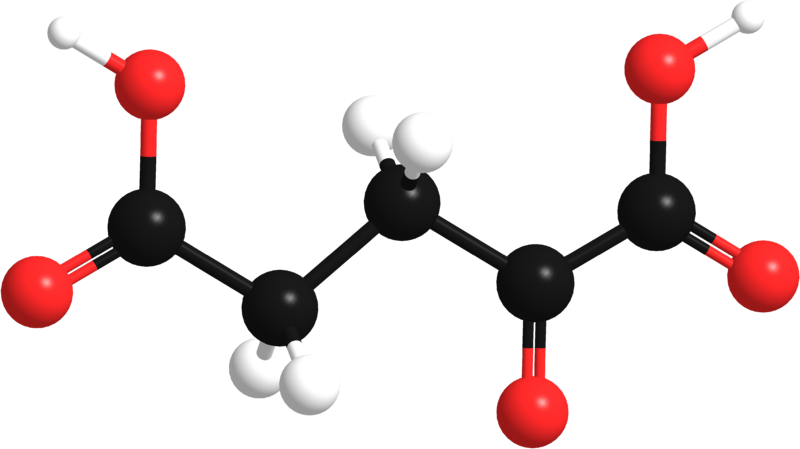
α-ketoglutaric Acid is one of two ketone derivatives of glutaric acid, which is naturally produced in the body during the metabolism of lysine and tryptophan. ketoglutaric acid almost always refers to the alpha variant if is not further qualified and β-Ketoglutaric acid is much less common. The difference of the two ketoglutaric acid is only in the position of the ketone functional group.
Scientists at Creative Proteomics utilize a highly quantitative method with high-performance liquid chromatography (HPLC) for the determination of α-ketoglutaric Acid levels in various samples, including Various Sample Type. High-Performance Liquid Chromatography (HPLC) with UV detection is used for the determination of α-ketoglutaric Acid (213 nm) levels in a lot of biological samples. This Methodology provides accurate, reliable, and reproducible results of α-ketoglutaric Acid measurement, which enables us to analyze of α-ketoglutaric Acid levels in vitro and in vivo.
α-Ketoglutarate is the anion part of α-ketoglutaric Acid and is a key intermediate in the Krebs cycle, which is a series of chemical reactionsused by all aerobic organisms to generate energy in the form of guanosine triphosphate (GTP). α-Ketoglutarate comes after isocitrate and before succinyl CoA. α-Ketoglutarate is also one of most important nitrogen transporters in metabolic pathways, in which the amino groups of amino acids are attached to theα-Ketoglutarate through transamination chemical reaction and then are carried to the liver where the urea cycle takes place. α-Ketoglutaric plays important function in oxidation reactions acting as a co-substrate and α-Ketoglutarate is one of the necessities for the hydroxylation of proline to hydroxyproline to product of Type 1 Collagen in combination with molecular oxygen. A recent study has shown thatα-ketoglutarate might play a role in regulating the TH1 differentiation and depletion of Glutamine.
The Russian-Polish botanist M. Tswett is generally recognized as the first person to establish the principles of chromatography. In a paper he presented in 1906, Tswett described how he filled a glass tube with chalk powder (CaCO3) and, by allowing an ether solution of chlorophyll to flow through the chalk, separated the chlorophyll into layers of different colors. He called this technique “chromatography”. Fundamentally, chromatography is a technique used to separate the components contained in a sample. High Performance Liquid Chromatography (HPLC) is a method able to separate non-volatile, thermally unstable, and polar components separate or in a mixture. HPLC is a type of chromatography that, because of its wide application range and quantitative accuracy, is regarded as an indispensable analytical technique, particularly in the field of organic chemistry. It is also widely used as a preparation technique for the isolation and purification of target components contained in mixtures.
α-ketoglutaric Acid Analysis Service Analysis Service at Creative Proteomics supports your research in α-ketoglutaric Acid Analysis. HPLC Based Analysis Service Platform enable us at Creative Proteomics offers you a state-of-the-art Analysis Service.
Sample Type
Various Sample Type
Method
High-Performance Liquid Chromatography (HPLC) with UV detection is used for the determination of α-ketoglutaric Acid (213 nm) levels in a lot of biological samples. This Methodology provides accurate, reliable, and reproducible results of α-ketoglutaric Acid measurement, which enables us to analyze of α-ketoglutaric Acid levels in vitro and in vivo.
Send us your samples, you will get all information that you need!







